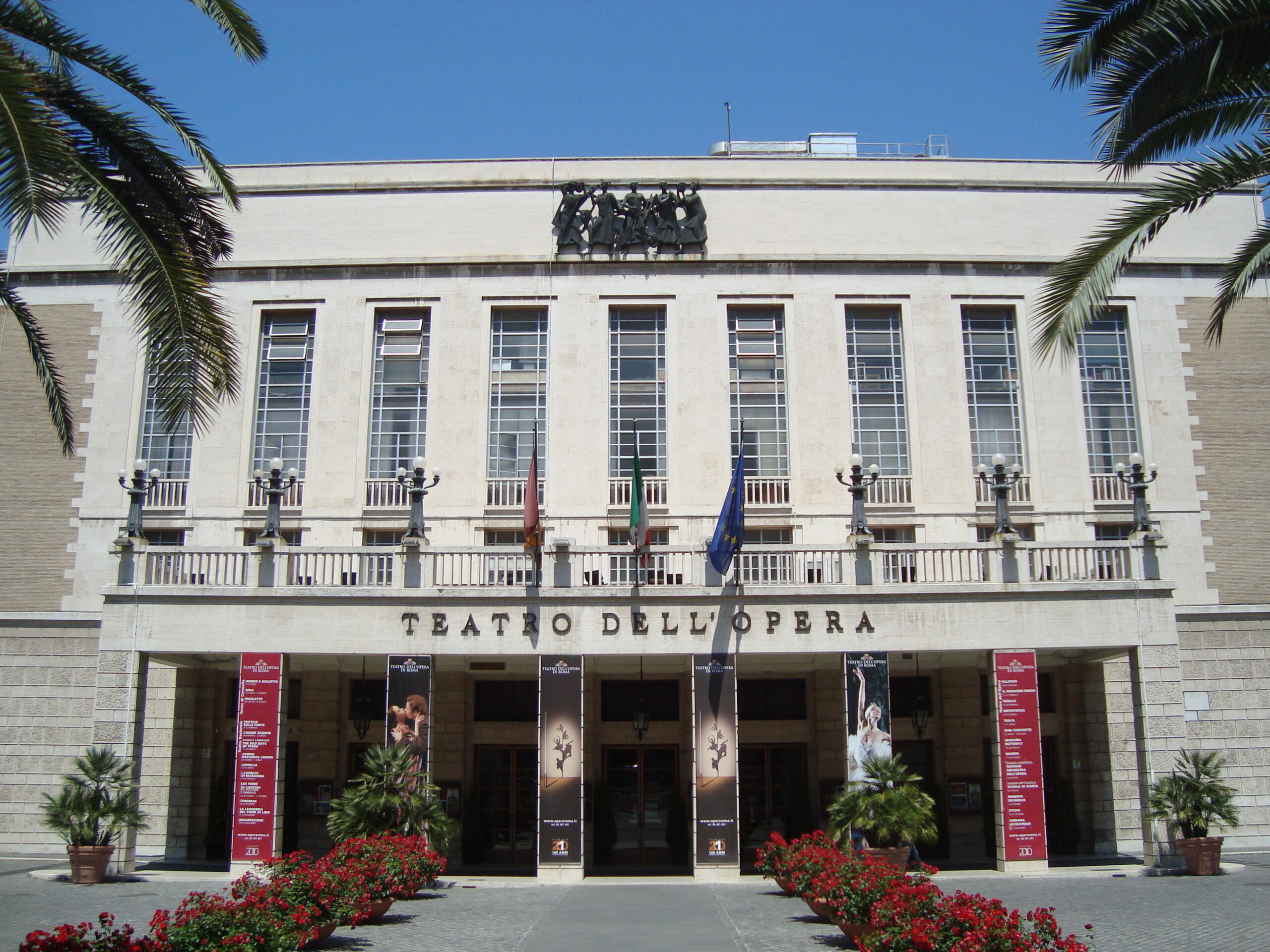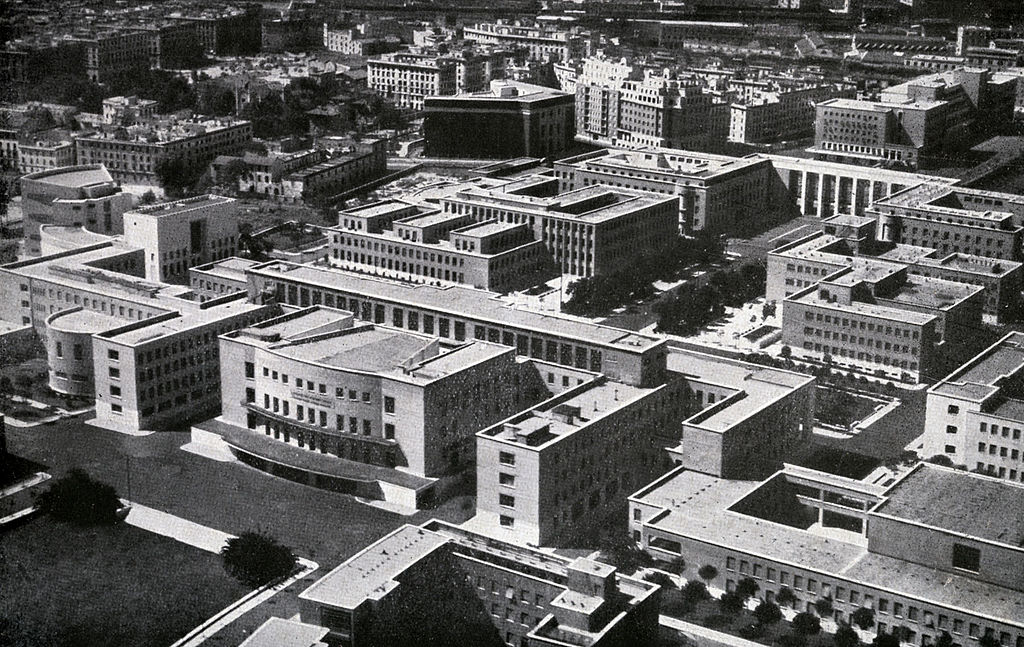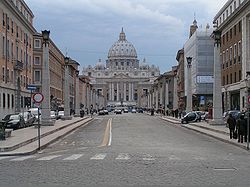The most important architect and urban theorist of the Italian Fascist Regime, Marcello Piacentini, died in Rome on this day, May 19, in 1960. Born in Rome, he studied architecture at the Regio Istituto di Belle Arti, Rome, from 1901 to 1904 and completed his training with his father, Pio Piacentini, also an architect.
Piacentini is credited for having devised the authoritative architectural language for Il Duce: a “simplified neoclassicism” which took inspiration both from 18th century classical revival and the more recent Rationalist movement. His mark can be clearly seen in the new university campus (Università di Roma La Sapienza, 1932) and the E.U.R (Esposizione Universale di Roma) district. Piacentini was instrumental in giving vision to Mussolini’s desire to restructure Rome. He worked on various urban proposals that cleared slums, improved traffic, and rendered visible prominent classical Roman monuments from a distance. To achieve this, he designed straight processional avenues, such as Via dell’Impero (1932; now Via dei Fori Imperiali) and Via della Conciliazione. Piacentini’s other notable projects include the urban renovation of Brescia and Livorno, the Museo Nazionale della Magna Grecia in Reggio Calabria, and the restoration of the Rome Opera House (1928–1958).
As Mussolini’s favored agent for the reconstruction of central Rome, Piacentini was the target of severe criticism for many decades. His work from the Fascist period is being reconsidered as scholars are reevaluating his architectural and urban planning projects independently from politics.
IMAGES:
Restoration of Teatro dell’Opera di Roma, 1926–1928, Rome
Sapienza University of Rome campus, 1935, Rome
EUR district, 1938–1942, Rome.
Via della Conciliazione, 1936–1950, Rome, with attilio Spaccarelli,
FURTHER READING:
U. Ojetti: ‘Lettera a Marcello Piacentini sulle colonne e gli archi’, Pegaso, v/2 (1933), pp. 213–15
‘La città Universitaria di Roma’, L’Architettura, xiv (1935) [special issue], pp. 2–8
‘Urbanistica della Roma mussoliniana’, L’Architettura, xv (1936) [special issue], pp. 3–6
‘L’Esposizione Universale di Roma, 1942’, L’Architettura, xvii (1938) [special issue], pp. 721–2, 725–6
G. Pagano: ‘Potremo salvarci dalle false tradizioni e dalle ossessioni monumentali?’, Casabella, xiv (1941)
B. Zevi: ‘Marcello Piacentini: Morì nel 1925’, Archit.: Cron. & Stor., 58 (1960)
V. Fraticelli: Roma, 1914–1929: La città e gli architetti tra la guerra e il fascismo (Rome, 1982)
‘Marcello Piacentini (1881–1960): L’edilizia cittadina e l’urbanistica’, Storia dell’urbanistica, iii/5 (1983)
D. P. Doordan: Building Modern Italy: Italian Architecture, 1914–36 (New York, 1988)
M. Lupano: Marcello Piacentini: Artista costruttore della città (diss., Florence, U. Studi, 1990)
R. A. Etlin: Modernism in Italian Architecture, 1890–1940 (Cambridge, MA, and London, 1991)




